🦋♄🜏 HOST-BODIES WANTED [I] How the Elite Hijack Flesh to Cheat Death ☠️♾️
Ritual Possession and the Parasite Immortality Scheme: Walk-Ins, Shove-Ins, and the Astral Coup.
Humanity’s fascination with cheating death – escaping the finality of the grave – is as old as civilization itself.
One especially unsettling idea recurs in myth, occult lore, and even modern science fiction: transferring one’s consciousness or soul at the moment of death into a new, younger body.
Could immortality be achieved not by elixirs or fountains of youth, but by body-swapping – vacating an aging vessel and possessing a fresh one?
This deep dive explores the history and fringe theories around consciousness transfer, from ancient rituals and religious concepts to occult conspiracies and “revelations” hidden in pop culture.
We’ll journey through Sumerian myths, Illuminati ceremonies, Hollywood thrillers, esoteric philosophies (even gematria number mysteries), tying together threads that suggest a shocking pattern.
As the saying goes: it’s “all true and yet it’s all fake” – but it certainly gives us something to explore while we’re here.”
Ancient Legends of Soul-Transference
Many cultures have legends hinting that souls can be severed from bodies and even placed into new ones. Long before modern sci-fi pondered “mind uploading,” ancient peoples told of sorcerers and spirits moving from body to body:
Sumerian Soul-Switching (The Urushdaur Rite)
Among the most dramatic tales comes from ancient Sumer (the cradle of civilization). An arcane ritual known as the Urushdaur – meaning literally “to throw the soul through the blood” – supposedly enabled priests to extract a person’s soul and install it in another body.
Described on secret terracotta spheres from the ruins of Eridu, this rite was part magic, part horror.
A “donor,” often a young captive, would be tortured for weeks or months to loosen their soul’s attachment to the flesh.
The Sumerians believed a child’s spirit isn’t fully fixed in the early years of life, making it easier to displace.
There were strict age rules: the donor could not be over 21 if female or over 14 if male.
Too young, and the child wouldn’t survive the brutal process; too old, and the soul’s roots ran too deep.
Most victims were between 8 and 14 years old.
After unimaginable torments (lasting anywhere from one to four months), a final ritual would rip the soul from the victim and capture it in a container, allowing the waiting “aspirant” to take over the vacated body.
The aspirant’s original body died during the soul-transfer and was secretly buried, while the poor donor’s soul remained trapped in a vessel – lest it escape and return as a vengeful ghost to “reclaim its lost body”.
According to those tablets, the success of Urushdaur dropped off sharply with age: it worked in “40 of every 60 small children… 1 of every 60 elders,” and about one-third of donors died from the ordeal.
(The use of a base-60 statistic is fitting – the Sumerians counted in sixties!)
This lurid story suggests that even five millennia ago, humans dreamed of body hopping to cure disease, spy on enemies, or simply usurp youth and power.
One Sumerian legend claims a princess’s deformed body was swapped in childhood for a beautiful peasant girl’s body – a sinister ancient “makeover” that left one girl effectively possessed by the other’s soul.
Parakaya Pravesha – Yogic Body Swap
Across the world in ancient India, mystical sages spoke of parakāya praveśa, literally “entering another’s body.”
Advanced yogis, through intense meditation and mastery of consciousness, were said to leave their own body and occupy someone else’s – not as an evil act but as a spiritual feat.
One famous story tells how the great philosopher Adi Shankara projected his soul into the corpse of a king so he could gain worldly experience and debate matters of love – then returned to his own body after the lesson.
Another tale from Hindu lore describes King Yayati, who magically exchanged his aged state with his son’s youth – allowing the king to be young again for a time while his son prematurely aged.
Such accounts straddle the line between myth and metaphysics, but they echo the idea that identity might be separable from the physical form.
Notably, the yogic tradition distinguishes voluntary body transfer from mere demonic possession – it’s depicted as a rare, enlightened ability, not something done for trivial gain.
Even so, these legends acknowledge the haunting question: if one soul enters, what becomes of the other soul in that body?
Ancient commentators asked if the original occupant is ousted or remains dormant – a question that still troubles modern depictions of body-snatching.
Egyptian and Classical Ideas
While no Egyptian texts explicitly describe soul-swapping between living people, their religion revolved around the transfer of the soul to new life.
Pharaohs sought to move their consciousness to the afterlife and perhaps into eternal statues or successor bodies.
The Egyptian soul was multi-part (ka, ba, etc.), and magical practices like creating ushabti dolls or Ba-birds were attempts to give the soul mobility beyond the body.
In Greco-Roman thought, metempsychosis (reincarnation of the soul) was taught by Pythagoreans and Plato, but usually as a natural cycle rather than an intentional ritual.
One exception is the myth of King Glaucus (in some tellings) who was resurrected by a sorcerer using another life – hinting at an exchange.
Hebrew lore gives us the Dybbuk – a malicious spirit that possesses a living person.
In the dybbuk tale (famously dramatized by S. Ansky), a dead man’s soul clings to his beloved by inhabiting her body, refusing to depart until exorcised.
This is more ghost possession than a ritual of immortality, yet it underscores the age-old belief that disembodied souls can latch onto flesh not originally their own.
And in Slavic folklore we find Koschei the Deathless, an evil figure who cannot die because he hid his soul outside his body (inside a needle, inside an egg, inside a duck, etc.).
While Koschei isn’t swapping bodies, the idea of removing one’s soul and securing it elsewhere to cheat death is clearly a variant of consciousness transfer – in this case, the soul in a phylactery to be retrieved later (a concept echoed much later by Voldemort’s horcruxes in fiction).
Ancient myths thus provided multiple angles on the possibility that body and soul are separable, and that an adept – or a villain – might move life essence around.
Whether framed as divine miracle, yogic siddhi, or dark sorcery, the implication was both tantalizing and terrifying: immortality might be possible if you’re willing to take over someone else’s living shell.
Dark Occult Rituals and Conspiracy Theories
Where myth leaves off, occult tradition and modern conspiracy lore pick up the thread. If one believes the whispers, secret societies and dark magicians have sought to actualize soul-transference rites – sometimes with innocent lives as the price.
In the hidden shadows of history, body-swapping ceases to be just a myth and becomes a deliberate practice of power:
The Illuminati’s Urushdaur Reborn
Some researchers suggest that the ancient Sumerian Urushdaur ritual never truly disappeared – it was simply hidden, passed down through mystery schools and elitist cults.
In fact, fringe theorists claim this is the ultimate secret of certain Illuminati bloodlines.
The Spanish researcher Xentor Xentinel speculated that Reptilian entities (in David Icke’s sense of interdimensional reptile-spirits) might have used Urushdaur-like techniques to usurp human bodies.
He notes how UFO lore includes “walk-ins” – where a spirit takes over a willing host – versus what Montauk Project whistleblower Preston Nichols called “forced-ins” or “shove-ins,” where a possessing entity pushes out the original soul by force.
Xentinel was stunned to find descriptions in Sumerian texts matching Nichols’ concept.
He proposes a wild scenario: if the Anunnaki gods were originally human-like, perhaps Reptilian beings abducted some of them long ago and used Urushdaur to steal their bodies – infiltrating our lineage from ancient times.
In this view, the global elite that rule today may not be biologically extraterrestrial, but their souls/astral forms are of a different species.
They maintain human appearances generation after generation by leapfrogging into fresh human bodies when the old ones wear out.
Astonishingly, an alleged insider claim via ufologist Alex Collier holds that at least one prominent family – hinted to be the Rothschilds – performs a soul-transfer ceremony on their children at age 3.
In other words, when a scion of the dynasty is about three years old, a non-human (Reptilian) consciousness is ritually inserted, displacing whatever soul was originally born into that body.
From that point on, the outward person grows up human in appearance but is, in soul and allegiance, one of the “parasite” overlords. (If true, this casts a disturbing light on why certain powerful bloodlines seem almost preternaturally driven and connected – they may literally not be the same souls as the rest of us.)
While evidence for this is, unsurprisingly, elusive, the very pervasiveness of these rumors in conspiracy circles is notable.
The idea that “the parasites don’t die” but simply reinstate themselves in new incarnations keeps resurfacing, from David Icke’s reptilian shapeshifters to science-fiction riffs like Being John Malkovich (more on that soon).
It speaks to an intuitive fear that perhaps a small cabal truly has hacked immortality by playing musical chairs with bodies – living on as seemingly new individuals across centuries.
“Mothers of Darkness” Ceremony
One of the most chilling purported rituals comes from Illuminati defectors and researchers like Fritz Springmeier.
In Illuminati hierarchy, the Mothers of Darkness are elite priestesses of the “Family.”
It’s said that at a certain high initiation, a Mother of Darkness (a Grande Dame in the cult) will sacrifice herself in a very specific way: she allows herself to be killed ritually so that her spiritual power can transfer to a younger successor.
In a secret castle in Belgium (the Château des Amerois, nicknamed the “Mother of Darkness Castle”), global elites supposedly gather for occult ceremonies.
At age 19, young Illuminati women are taken through a “1,000 Points of Light” ritual beneath a dome of exactly one thousand lights.
According to accounts, during a coronation of a new Mother, an old one gives up her life willingly; at the moment of death, her last breath is inhaled by the replacement, symbolically (or perhaps literally) taking in her life force.
The no-blood-spilled stipulation and the reverent cannibalism (the male ritual participant is sacrificed and even eaten) underscore how seriously they treat this transfer of power.
The inhalation of the last breath is an ancient idea – in many cultures the breath is the soul (think “spiritus” or “prana”).
Here it becomes the medium of a soul exchange.
The successor not only carries on the role, but, it is believed, actually inherits the spiritual might and perhaps the very entity that empowered the deceased matriarch.
Researchers note the number 2,197 – the alleged count of Grande Dames present – is remarkably specific and symbolic (2,197 is 13³, and 13 is the classic number of covens and bloodlines).
Such numeric signatures are thought to be intentional (more on gematria later).
During the ritual, intense trauma and ecstasy open all participants to the spirit world.
It’s reported that these black magic ceremonies create a powerful “vibrational field” of negative emotion (fear, pain, hatred), which attracts lower astral entities.
At the crescendo, those entities – described as “parasitic reptilian gods” – possess the bodies of the officiates.
In short, the ritual’s real purpose is to let non-human spirits take over human hosts.
As Fritz Springmeier puts it, the top Satanist elite are “full-blood reptilians cloaked in human form.”
The public face may be a suave politician or royal, but behind the eyes lurks an ancient consciousness that has perhaps hopped bodies for generations.
It’s a ghastly thought, yet it aligns eerily with the Urushdaur/Reptilian theory.
In one, a human sorcerer steals a body; in the other, a demon steals from the human.
In both cases, someone’s body is usurped by another intellect.
Satanic Ritual Abuse (SRA) and Trauma as a Tool
Many accounts of SRA survivors (though controversial) detail how ritualistic trauma is used to fracture the mind for programming – but some testimonies go further, alleging soul manipulation.
Children in these cults are sometimes told they were “born for” a certain spirit to inhabit.
The Mother of Darkness “pathworking” described above includes years of systematic abuse, starting even before birth, to create dissociative alters and prepare the child for extreme rituals.
The reasoning given is that only a very strong soul that fought to survive (for instance, one that endured a premature birth and harsh childhood) can withstand the astral ordeal of possession or soul transfer.
In effect, the victim’s psyche is hardened and fragmented until it’s a suitable vessel.
It’s noteworthy that in both the Sumerian Urushdaur and modern SRA lore, intense prolonged torture is not gratuitous but functional: it’s intended to dislocate the soul from its body.
The Sumerians said the soul of a young person isn’t fully anchored and can be dislodged with pain.
Likewise, trauma-based mind control in Illuminati circles may aim to loosen the soul’s hold, making the person’s body accessible to other entities.
Survivors have described moments of feeling outside their body during extreme abuse – a dissociative survival response that, occultly, might open a door for something else to step in.
It’s a grim parody of shamanic initiation (where the shaman’s soul temporarily leaves the body to journey).
Here, the goal is to kick the soul out permanently.
Alchemy, Magic, and the Quest for Immortality
Throughout Western occult history, while most alchemists sought the Philosopher’s Stone to prolong life in the same body, some legends speak of transferring life essence.
For instance, medieval grimoires contain spells for “skinwalking” or body exchange, and rumors swirled of sorcerers who maintained youth by stealing the body of a young person (a theme later echoed in gothic fiction).
The infamous Count St. Germain was said to never age; some speculated he found a way to swap bodies or possess others to appear across centuries.
Aleister Crowley, the 20th-century occultist, wrote about techniques of projecting consciousness and even hinted at reincarnating intentionally.
Upon his death, Crowley purportedly told disciples he planned to return in the body of a certain baby boy born at that moment – an attempt at directed rebirth.
Whether one takes that seriously or not, it shows occultists were indeed toying with the idea of consciousness surviving and moving to another host.
Modern occultists sometimes discuss creating “homunculi” or empty vessels – though largely symbolic, the idea of a soulless body to be animated by a will echoes this theme.
And in voodoo or Vodou tradition, Bokors are said to capture souls of the dead or zombify living victims (controlling their bodies).
While true Haitian zombie lore is more about neurotoxins causing a deathlike trance, the folkloric explanation is that a sorcerer steals the ti bon ange (part of the soul), leaving the person’s body an empty shell to command.
Even shamanic and tantric lore worldwide contains whispers of those who could swap bodies at death – for example, Tibetan sorcerers who mastered the “phowa” transference at death to leap into a fresh corpse and revive it with their consciousness.
It’s said some high lamas could reincarnate deliberately in a child of their choosing. These esoteric snippets all paint a consistent picture: if there is a mechanism by which a soul can detach at death (or before) and go elsewhere, the most ambitious (or unethical) will try to exploit it to live longer or gain power.
In the lens of conspiracy, these occult practices aren’t just historical footnotes – they are happening now, in elite circles.
The claim goes that certain families (the names are familiar: Rothschilds, Rockefellers, European royals, etc.) hold dark ceremonies to transfer consciousness into younger bodies, ensuring that the “parasites don’t die” but rule perpetually in one incarnation after another.
The public merely thinks generations are passing; in reality, the same souls could be recycling through new faces, maintaining an unbroken grip on power.
It’s a terrifying allegation, but one that ties together many conspiracy tropes – from the obsession with youth (note how some plutocrats desperately pursue anti-aging tech) to bizarre hints dropped by insiders.
Whether or not one believes these dark theories, they undeniably have penetrated pop culture and alternative media.
Which brings us to an intriguing pattern: works of fiction that seem to mirror these very practices, almost as if broadcasting the truth in plain sight.
Yes, predictive programming.
“Revelation of the Method” in Pop Culture
Conspiracy researchers often talk about “revelation of the method” – the idea that the elite must symbolically reveal their hidden activities through fiction and art.
Real or not, the theme of body swapping, soul transfer, and immortality through taking over another body has become remarkably common in movies, TV, and literature.
Some of these works are well-known; others are obscure – but taken together, they form a startling mosaic of synchronicity with the lore we’ve discussed.
Here are some notable examples across media, many of which uncannily echo the specifics of the rituals above:
The Skeleton Key (2005)
A supernatural thriller set in Louisiana, steeped in hoodoo folk magic. Without spoiling all the twists: the plot centers on an aged pair of servants who, decades ago, learned a hoodoo spell to transfer their souls into younger bodies. They succeeded – occupying the bodies of their rich plantation-owning employers – and have lived on by periodically “body switchin’.” By the film’s end, the protagonist (Kate Hudson’s character) discovers too late that she’s the next victim: the old woman’s soul takes over her body, trapping the young woman’s consciousness in an immobile, dying body.
The Skeleton Key makes the mechanism explicit: a magic ritual, an old gramophone recording of a conjure chant, and the use of mirrors to catch the soul.
The imagery of the mirror is notable – mirrors are often believed in folklore to catch or transfer souls (and recall the “Black Mirror” of scrying).
The film’s climax, where two souls basically swap bodies, is essentially a Hollywood depiction of Urushdaur: an older person cannibalizing the youth of another via soul transfer.
It’s no coincidence the story involves children being taught hoodoo, and a room full of spell ingredients – reminiscent of an occult preparation.
The movie even quietly nods to repeated history: one character has already body-hopped once (from an old man into a young man) before helping orchestrate the final swap.
For a mainstream thriller, it’s shockingly on-the-nose about consciousness theft.
Get Out (2017)
Jordan Peele’s acclaimed horror film is another body-snatching for immortality story, under the guise of social thriller.
Here the means are a blend of science and hypnosis: an enclave of wealthy individuals (in the film, older white elites) conspire to transplant their brains into young, healthy bodies (in the film, those of Black people chosen for various desirable traits.
The process, called the Coagula Procedure, involves hypnotizing the victim into paralysis (the “Sunken Place”) and then performing a neurosurgical brain swap.
The twist: a portion of the victim’s mind remains trapped, watching helplessly as a passenger in their own body – exactly as some occult accounts describe the ousted soul lingering as a suppressed alter.
In Get Out, an old blind art dealer essentially “wins” a young photographer’s body in an auction, seeking to gain the young man’s eyesight and artistic vision/
Peele’s film, while about race and exploitation on its surface, quite literally portrays the elite consuming the bodies of the youth to extend their own lives – a modern secular Urushdaur with scalpels instead of spells.
The fact that part of the victim’s consciousness remains (a “sliver” that can only observe, not control) is horrifying – it resonates with the idea that the original soul might be locked inside, like the Sumerian victim’s soul in a jar, witnessing someone else driving their body.
Get Out struck a nerve culturally, perhaps in part because it dramatized a subconscious fear that people in power covet not just our labor, but our very lives.
The film even uses deer antlers in a kill scene – a symbol of regeneration and immortality in many mythologies – possibly as an occult wink.
Being John Malkovich (1999)
This quirky film’s entire premise is about experiencing life inside another person’s body, and it escalates to an immortality scheme.
A secret society of aging eccentrics have discovered a portal into actor John Malkovich’s mind, which they use as a vessel to live on.
The catch: the portal only grants permanent control if they enter at the right moment – before midnight on the host’s 44th birthday, to be exact.
The elder mastermind, Dr. Lester, has been body-hopping like this for generations, moving from one host to another at the moment the previous becomes “ripe” for takeover.
By film’s end, Lester and his cadre succeed in entering Malkovich and essentially becoming him, dooming his original consciousness.
In a darkly comic twist, the next target is hinted to be a baby (so the cycle will continue indefinitely).
Being John Malkovich is often remembered for its absurd humor, but as critics have noted, it “enacts a peculiar and secular idea of immortality – a succession of lives in ‘vessels’.
Malkovich’s personality is overwritten; at one point Malkovich even appears possessed by many voices.
The film hides a lot of esoteric nods: the strange “7½ floor” (halfway between planes of existence?), the precise age 44 (which in numerology could be seen as 4+4 = 8, symbol of infinity ♾️).
The rule of midnight on the 44th birthday is reminiscent of Cinderella’s clock or mystical numerology, but also parallels the idea that there are windows or cosmic timing for soul transfer.
In the end, Malkovich becomes a shell for others, illustrating the ultimate horror: loss of one’s autonomy to another will.
Many have read the film as a metaphor for the desire to live through others, but taken literally it’s a chilling immortality-through-possession tale, just delivered in playful wrapping.
“Behind Her Eyes” (2021 series)
A recent example that took many viewers by surprise.
This Netflix miniseries seems like a domestic psychological drama until it veers into the paranormal.
We eventually learn that two characters have mastered astral projection (out-of-body travel via lucid dreaming) and have used it to swap bodies.
One character’s soul (Rob) coveted the life of his friend (Adele) and, while astral projecting, traded bodies and murdered the friend’s soul in her trapped body.
He then lives on as “Adele” for years.
Later, “Adele” (who is really Rob in disguise) does the same trick to the protagonist Louise – ending up in her body and killing Louise inside Adele’s body.
The result is the malevolent Rob now inhabiting Louise, appearing to the world as a woman who’s happily united with Adele’s husband – a perfect cover.
This shocking twist hit audiences hard precisely because it unmasked an occult premise under a realist veneer: mastery of out-of-body travel as a weapon.
Behind Her Eyes explicitly shows that through practice of lucid dreaming and astral projection, an experienced practitioner can invade someone else’s body and push out their spirit.
The show even has the characters following instructions from a notebook – implying there’s a manual for this dark art available to ordinary people.
(Indeed, some viewers noted that the series referenced real concepts from occult literature, suggesting the writers did their research.)
This was a prime example of predictive programming or revelation: it not only presented the concept of soul hijacking to a mass audience, it did so in a way that made one re-think earlier clues in the plot (revelation of the method, indeed).
The timing is interesting – coming out in 2021, amid a period where people were perhaps more spiritually curious (during global lockdowns, many turned to meditation/dreaming practices).
It’s almost like a wink that “everyday humans can also try this” given the right knowledge – paralleling rumors of classified documents or manuals that teach consciousness projection.
In fact, CIA’s declassified Gateway Process memo discusses out-of-body techniques, though not swapping bodies per se.
Still, Behind Her Eyes stands as one of the most forthright depictions of astral soul transfer in modern media, complete with the idea of stealing someone’s entire life by taking their body.
Other Films & TV: The list goes on and on, spanning genres:
All of Me (1984), a comedy where a dying heiress (Lily Tomlin) uses a swami’s spell to transfer her soul into a younger woman – but a mistake puts her spirit into a lawyer (Steve Martin) instead, leading to two souls in one body battling for control. While played for laughs, it directly uses the trope of a ritual gone wrong, causing a soul to be misplaced. (Notably, the plan was to put the soul in a willing host; the notion of a voluntary donor for soul transfer appears here, raising ethical questions even in comedy form.)
Chucky (Child’s Play series) – The horror slasher about a killer’s soul in a doll. Charles Lee Ray, a murderer, transfers his soul into a Good Guy doll via a voodoo chant to escape death. Across the franchise, Chucky repeatedly tries to jump into human bodies (often targeting children like Andy) to regain human form. Again, a ritual and an amulet are key – reflecting voodoo traditions. It’s a pop-culture take on demonic possession with intention; Chucky wants to possess someone and live on.
Fallen (1998) – A supernatural thriller where a demon (Azazel) jumps from person to person via touch, effectively body-hopping to cause mayhem. Though the demon isn’t seeking immortality (it’s immortal already), the mechanism – transferring consciousness by touch – is reminiscent of how possession in folklore sometimes works. It shows how a being without a body can ride human hosts like vehicles.
Self/less (2015) – A science-fiction film in which a wealthy man (Ben Kingsley) undergoes a high-tech procedure to place his consciousness into a young healthy body (Ryan Reynolds). The twist: the “new” body wasn’t grown in a lab as he was told, but actually belonged to someone else originally (who was suppressed by drugs). When the host’s memories start surfacing, conflict ensues. Self/less explores the morality of taking over another’s life for personal gain. It’s essentially Urushdaur via medical technology – a literal brain transplant scenario marketed as a cure for mortality.
Altered Carbon (2018, based on Richard K. Morgan’s novel) – A cyberpunk series where human minds are digitized into “stacks” and can be re-sleeved into different bodies. The rich in this world achieve a form of immortality by endless body upgrades, even making illegal clones of themselves for spare parts. While this is done through sci-fi tech, the philosophical questions are the same: what becomes of identity when you change bodies like clothing? Notably, the elite are called Meths (after Methuselah, the biblical long-lived figure). The show also has plotlines about consciousness double-sleeving (two copies in two bodies) and unwilling sleeve theft. It’s a futuristic mirror of the age-old desire to cheat death by not staying in one body.
Harry Potter and the Sorcerer’s Stone (2001) – Even children’s fantasy touches the theme. Lord Voldemort survives as a wisp of soul after his body’s destruction, and he parasitically inhabits Professor Quirrell’s body (literally sharing the body, as seen in the final reveal where Voldemort’s face is on the back of Quirrell’s head). Later in the series, Voldemort tries to possess Harry too. The entire Horcrux subplot is about storing pieces of soul in external vessels (not moving into a new body, but anchoring oneself to objects to resurrect later – similar to Koschei’s egg).
The Golden Compass (His Dark Materials, 2007 film / 2019 series) – Based on Philip Pullman’s work, it introduced the concept of daemon – an external soul. The sinister Magisterium in the story conducts experiments separating children from their daemons (soul) to create zombie-like obedient beings. While not about transferring souls to new bodies, it is about extracting souls for power and control. This resonates with the idea that tormenting children (as in Urushdaur or SRA) is done to sever soul from body. In His Dark Materials, the severed children don’t live long – reinforcing that a body without its soul is just a shell.
Avatar (2009) – The film features a technology where humans project their consciousness into genetically engineered alien bodies (“avatars”) to live and breathe on Pandora. At the end, the hero Jake Sully permanently transfers his mind into his Avatar body. Though achieved via a blend of sci-fi and a Na’vi spiritual ritual, it is essentially a mind transfer into a new biological vessel – a positive spin on what the occult would call walk-in.
Black Mirror – “San Junipero” (2016) – In this celebrated episode, elderly characters upload their consciousness to a digital simulated world where they can live in young avatars forever. While no flesh is involved, it’s another facet of the immortality question: escape death by transferring your mind into another form (in this case, software). Though not evil, it brings up the same philosophical issue: is the uploaded self truly “you” or just a copy? In the episode, it’s opted-in before death, effectively a high-tech soul transfer to a paradise realm, which interestingly parallels religious promises of heaven via mind upload.
Quantum Leap (TV series 1989-1993) – The protagonist Sam Beckett “leaps” into other people’s bodies throughout time, inhabiting them and guiding their lives for a short period. This is more time-travel/possession hybrid, but again we see a benevolent version of occupying another’s body.
Doctor Who – Various episodes involve body swaps or consciousness transfers (e.g., “Mind Warp”, “The Possession”, etc.), often as one-off sci-fi plot devices, but reflecting cultural familiarity with the trope.
Anime & Comics:
Japanese anime has many soul-transfer themes (e.g., Ghost in the Shell explores digitized consciousness in cyborg bodies; Naruto features a villain Orochimaru who literally moves his soul into new host bodies periodically to gain immortality – a direct parallel to everything above, complete with the host eventually withering and needing replacement). In comics, characters like Doctor Doom have used sorcery to swap bodies with foes, and many supernatural storylines in DC/Marvel involve possession or soul displacement.
From these examples, it’s clear the motif of consciousness exchange is everywhere. Some portray it as evil and horrific (e.g. Get Out, Skeleton Key), others as bittersweet or wondrous (San Junipero, Avatar).
But almost all wrestle with the ethical and spiritual implications: Is the self the body, or the mind/soul?
What is it like to be a stranger in one’s own body?
Can two souls share one form?
And underlying many is the promise or curse of immortality – continuing beyond your natural life span, albeit at great cost.
It’s hard not to see a kind of synchromystic pattern here.
And why did so many 2010s works focus on this theme?
Well, some thinkers would say the veil is thinning – the hidden rulers are revealing their methods through art, either to gain karmic permission or to psychologically prepare the masses.
Even dialogue in these works sometimes winks at the wider concept: in Get Out, when Chris asks “Why us? Why black people?” the old man answers ironically, “Because some people want to live longer, stronger – they want your bodies” (paraphrased).
In Being John Malkovich, the absurd requirement of “vessel at 44th birthday” evokes ritualistic precision.
In Avatar, the transfer is done at the “Tree of Souls” – a sacred site, almost like an altar for a rite of passage.
This blending of fiction and potential reality leads to an uncanny feeling: are these stories purely imaginative, or are they reflecting something fundamental about our world? To explore that, we should look at what science and philosophy say – and where they’re heading.
🦋♄🜏 HOST-BODIES WANTED [II] Bio-Hacking, Uploads & the Programmable Afterlife ☠️♾️
Leaving the realm of myth and magic, one might assume modern science dismisses all this as superstition.






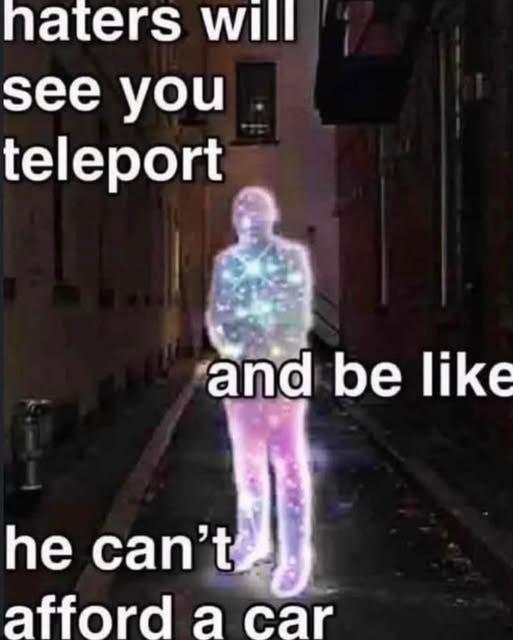



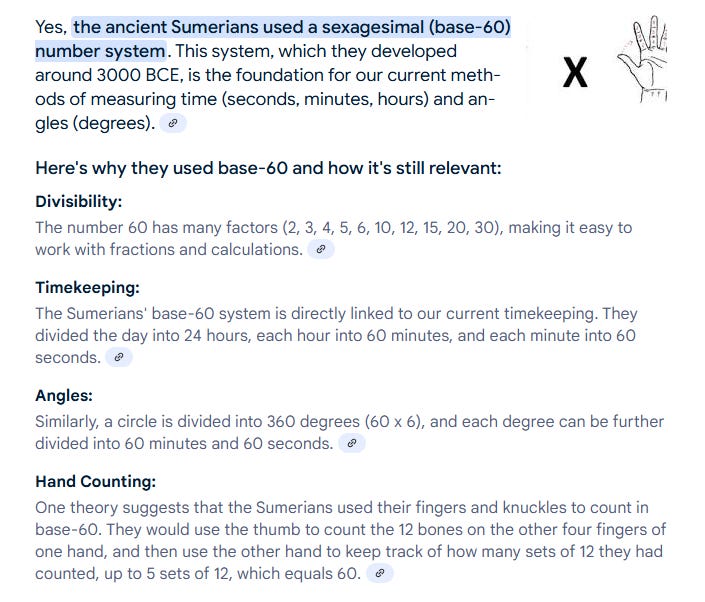

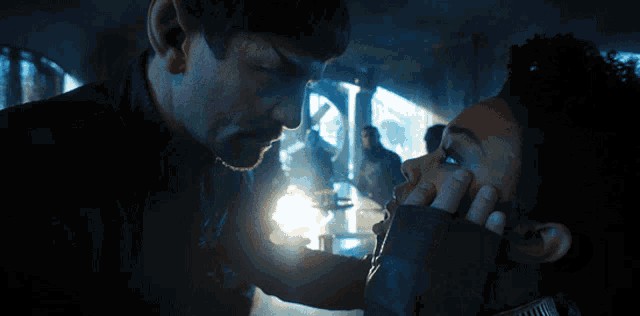










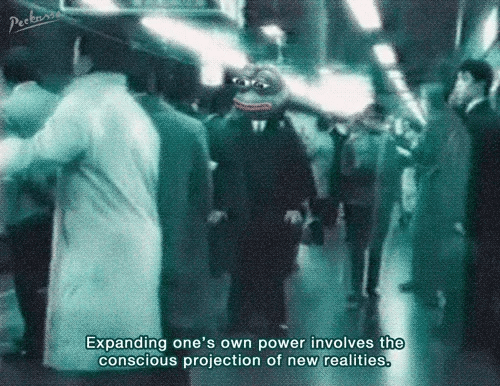
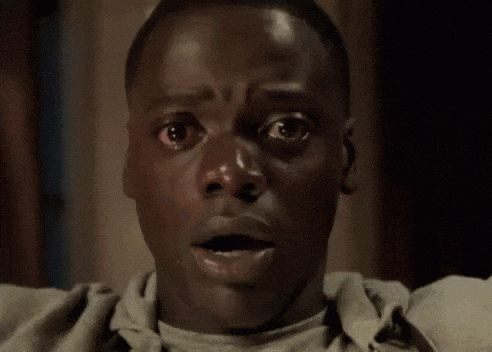




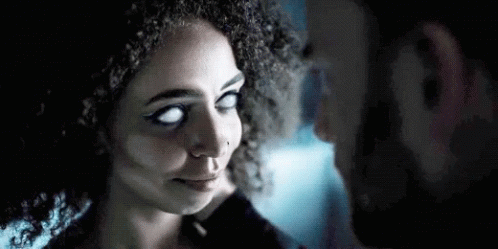




![🦋♄🜏 HOST-BODIES WANTED [II] Bio-Hacking, Uploads & the Programmable Afterlife ☠️♾️](https://substackcdn.com/image/fetch/$s_!hqaH!,w_1300,h_650,c_fill,f_auto,q_auto:good,fl_progressive:steep,g_auto/https%3A%2F%2Fsubstack-post-media.s3.amazonaws.com%2Fpublic%2Fimages%2F84bc2801-7721-44a3-a376-568a967c4c79_268x158.gif)